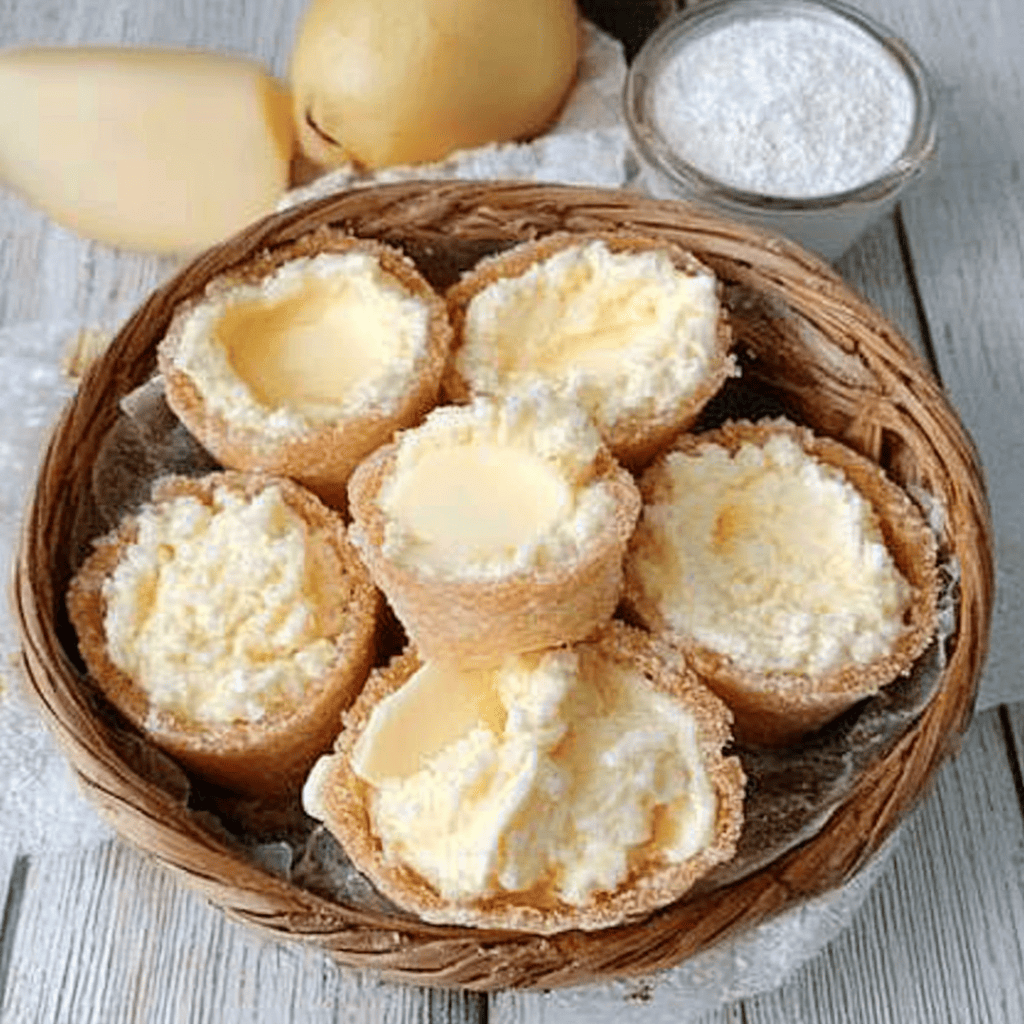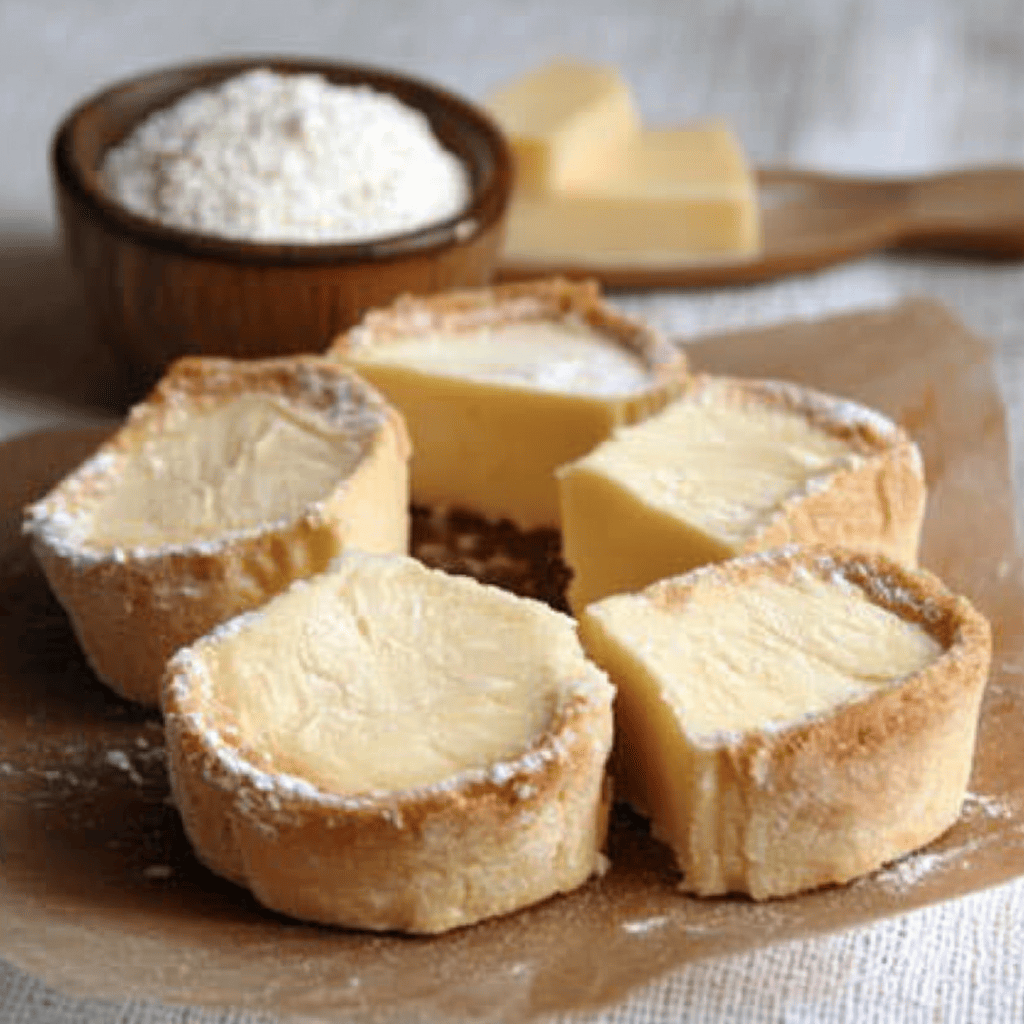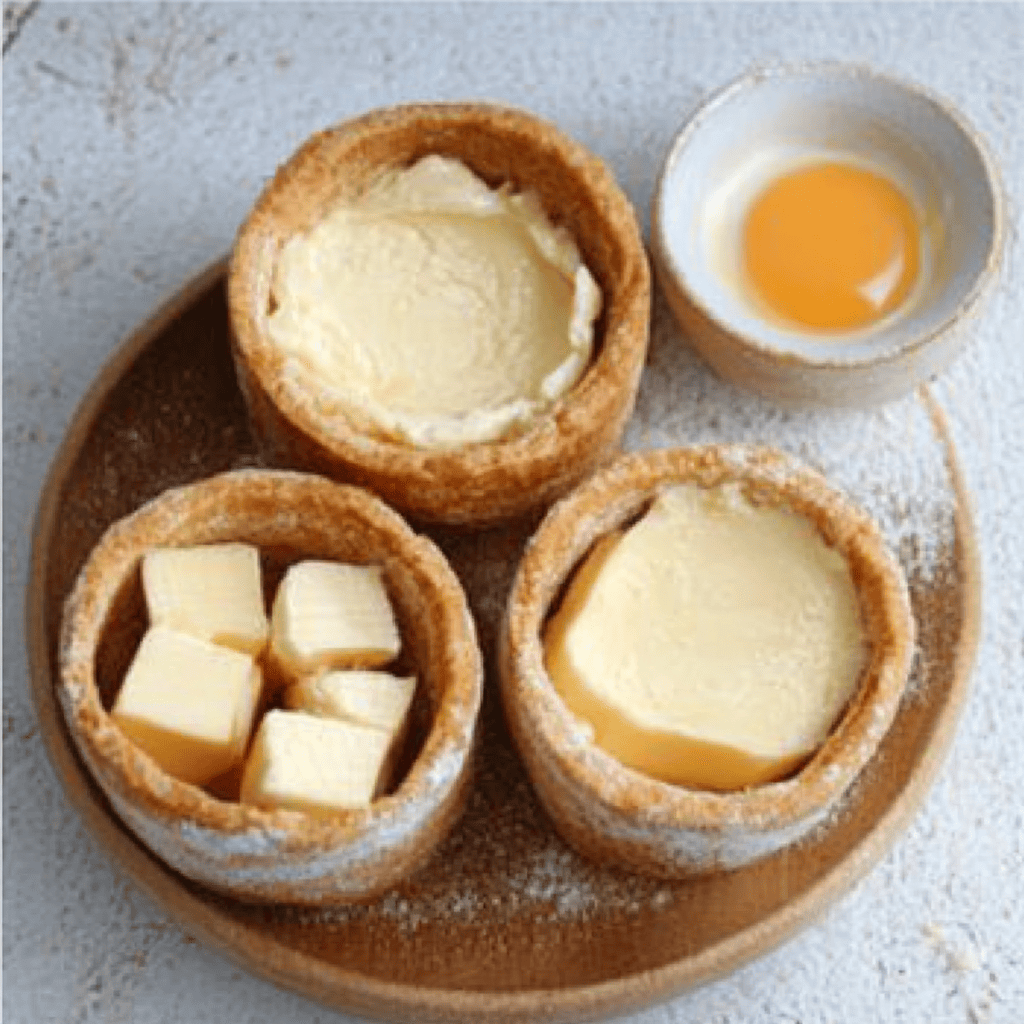the Cheese Cups
Introduction
Cheese cubes are delicious traditional Mexican desserts with a sweet pastry base and a creamy cheese filling. They can be compared to cheesecakes, but their texture and flavor are unique. They’re perfect with coffee or as a sweet treat any time of day.
History and Origin of Cheese Cups
Cubiletes originate in Spanish pastries, where similar pastries known as “cheesecakes” exist. During colonization, the Spanish introduced many recipes to the Americas, adapting them to the ingredients available in Mexico, giving rise to this version of cheese cubiletes .
In Mexico, these desserts are very popular in traditional bakeries and homes, especially at family gatherings or celebrations. Their combination of crispy dough and a soft, sweet filling has made them a classic of Mexican cuisine.
Cheese cubes are a traditional dessert in Mexico, but their origin dates back to the influence of European pastries brought by the Spanish during the colonial era. Over the centuries, this recipe has been adapted and transformed to become the delicious dessert we know today.
Origin and Evolution
1. European Influence: Cakes and Cheesecakes
The Spanish introduced numerous pastry recipes to America, including cheesecakes , similar to the cheesecake eaten in Spain and Portugal. These desserts were made with a flour base and a filling of fresh cheese, eggs, and sugar.
In Portugal, for example, there are the famous Pastéis de Nata , small tartlets filled with cream that bear a certain resemblance to Mexican cheese cubes.
2. Adaptation in Mexico
During the colonial era, convents and bakeries began experimenting with local ingredients, giving rise to new versions of European desserts. Over time, typical Mexican products were incorporated, such as cream cheese , which replaced fresh cheese in many recipes.
In the late 19th and early 20th centuries, cheese cubes began to gain popularity in traditional Mexican markets and bakeries, becoming a highly prized homemade sweet.
3. Popularization in Mexican Gastronomy
Throughout the 20th century, cheese cubes became a common dessert in bakeries and pastry shops. Their convenience and delicious flavor made them ideal for accompanying coffee or hot chocolate.
Today, cheese cubes are sold at fairs, markets, and traditional bakeries , and many families prepare them at home using recipes passed down through generations.
Cultural Significance and Tradition
Traditional homemade dessert: Common at family gatherings and celebrations.
A symbol of Mexican bakery, it’s part of the wide variety of traditional sweets, along with conchas, campechanas, and orejas.
Regional variations: In some areas, they’re prepared with ranch cheese or combined with fruit.
Cheese cubes are more than just a dessert; they represent the fusion of Spanish cuisine and Mexican creativity, resulting in a delicious recipe steeped in history.

Ingredients and Preparation
Ingredients of the Base (Sweet Dough)
- 50 g of powdered sugar
- 75g of standard sugar
- 100 g of butter
- 1 teaspoon of vanilla essence
- 1 egg
- 250 g of wheat flour
- 1 pinch of salt
Ingredients for the Cheese Filling
- 450 g of cream cheese (Philadelphia type)
- 150 g of sugar
- 24 g of cornstarch
- 4 eggs
- 150 ml of milk
- 1 tablespoon of vanilla essence
- Juice of 1 lemon
Preparation
Preparing the dough
- Mix the powdered sugar, standard sugar and butter until you get a creamy consistency.
- Add the egg and vanilla, beating until the mixture is homogeneous.
- Add the previously sifted flour and salt and mix until you obtain a smooth dough.
- Wrap the dough in plastic wrap and refrigerate for 20 minutes .
Preparing the filling
- Blend all the filling ingredients until you get a smooth mixture.
Assembly and baking
- Roll out the dough on a floured surface and cut out circles slightly larger than the cupcake liners.
- Cover the bottom and edges of the molds with the dough.
- Pour the cheese mixture into each mold, filling it 3/4 full to prevent it from spilling over during baking.
- Bake at 180°C for 45-50 minutes until the surface is golden.
- Let cool completely before removing from the mold to prevent breakage.
Variants and Tips
Chocolate Cheesecake Cubes : Add chocolate chips to the filling for a sweeter touch.
Citrusy Version : Add lemon or orange zest for a fresher flavor.
Keto Cubes : Substitute almond flour for the wheat flour and use sweetener instead of sugar.

Fun Facts and More Information about Cheese Cups
1. Origin of the Name “Cubilete”
The name “cubilete” comes from the term used to describe small, rounded containers. In Mexican pastries, this term was adopted to refer to these individual pastries filled with cheese.
2. Relationship with Spanish Gastronomy
Cheese cups have similarities with desserts such as Spanish cheesecake and Portuguese Belém pastries , although the dough and preparation vary.
3. Key Ingredient: Cream
Cheese Cream cheese, originally from the United States, became popular in Mexican baking in the mid-20th century. Its use in cheese cubes gives them a smooth texture and a slightly acidic flavor that balances the sweetness.
4. Cups in Mexican Culture
- They are a typical dessert in traditional bakeries and local markets.
- They are enjoyed at celebrations such as birthdays, family reunions, and religious holidays.
- In some regions, they are sold at fairs and street stalls along with other typical sweets.
5. Regional Variations
Although the traditional recipe is maintained, in some areas of Mexico the cubiletes are prepared with queso de rancho , a type of fresh cheese that gives them a more authentic and rustic flavor.
6. Ideal Accompaniments
- Pot coffee (with cinnamon and piloncillo)
- Hot chocolate
- Vanilla or strawberry atole
- Cinnamon or chamomile tea
Questions about Cheese Cups
What is the origin of cheese cubes, and what influences does their recipe have?
Why is cream cheese a key ingredient in this preparation?
How are cheese cubes different from other similar desserts, such as cheesecake or pastels de Belém?
How has the recipe for cheese cubes evolved over time in Mexico?
What are some regional variations of cheese cubes, and what ingredients might vary?
Why are cheese cubes a popular dessert in Mexican bakeries and fairs?
What are the ideal accompaniments for enjoying cheese cubes?
What techniques can be used to achieve a perfect texture in the base and filling of the cube?
How did convent baking influence the spread and adaptation of this dessert in Mexico?
What impact do cheese cubes have on Mexican gastronomy and its cultural identity?
Texture and Flavor
- Texture:
The base is a soft, slightly crunchy sweet pastry. The filling has a creamy, firm yet delicate texture, similar to a mini cheesecake. - Flavor:
Sweet and balanced, with a mild cream cheese flavor combined with vanilla notes and a touch of citrus from the lemon juice. The base adds a delicious buttery contrast.
Consumer Context
- Very popular in Mexican pastry shops and bakeries .
- They are enjoyed as a dessert, at family gatherings, children’s parties, or with coffee or hot chocolate.
- Perfect as an option for a snack or sweet breakfast.
Visual Aspect
- Small tarts with a creamy filling in the center, ivory or light yellow in color.
- They usually have a smooth, shiny surface and can be decorated with powdered sugar or fruit.
Curiosities
- They are also known as “mini Mexican cheesecakes” .
- Although cream cheese is the main ingredient, they were originally made with cottage cheese or fresh cheese.
- The name “cubilete” comes from the small, cylindrical mold used to bake them.
Estimated Nutritional Value (per unit)
- Calories: 220–260 kcal
- Fat: 14–16 g
- Carbohydrates: 20–25 g
- Protein: 4–6 g
- Sugars: 14–18 g
(Approximate values, may vary depending on size and exact recipe)
Additional Benefits and Interesting Facts
- Cream cheese provides calcium, protein and fat that provide satiety.
- Its neutral flavor allows it to be combined with fruits, jams, or customized toppings.
- They can be easily adapted to low-sugar or gluten-free versions (by changing the flour).
Other Information in Spanish
- You can freeze them without any problem, and when you reheat them briefly in the oven they are as good as freshly made.
- A popular variation is to add strawberry or blackberry jam to the center before baking.
- If they are prepared in silicone molds, it is easier to remove them from the mold without breaking them.

Conclusion
Cheese cubes are a traditional Mexican dessert distinguished by their balance of a crispy base and a creamy, sweet filling. Although their preparation requires patience and precision, the result is a delicious dessert perfect for any occasion .
They’re ideal for accompanying coffee, sharing with family, or surprising friends with a homemade dessert. Their versatility allows you to create different versions according to your personal tastes.
Cheese cubes are much more than a simple dessert: they represent the fusion of European baking traditions with the ingredients and techniques of Mexican cuisine. Their history dates back to the colonial era, when the Spanish introduced recipes for cheesecakes and tarts, which were adapted with local products to give rise to this delicious treat.
Over time, ice cubes have evolved, gaining popularity in markets, bakeries, and fairs, where they have become an irresistible option to accompany a hot beverage. Their crispy base and creamy cheese filling make them unique, and their versatility allows for the addition of different ingredients to create innovative versions, such as ice cubes with fruit, chocolate, or spices.
Furthermore, this dessert stands out not only for its flavor but also for its cultural significance. In many Mexican homes, cheese cubes are part of family gatherings, celebrations, and special moments, reinforcing their value within the country’s traditional pastries.
In conclusion, cheese cubes are a showcase of Mexican culinary creativity, combining ancient techniques with modern ingredients to create a dessert that continues to captivate palates. Their simple preparation and unparalleled flavor make them an ideal recipe for any occasion.

